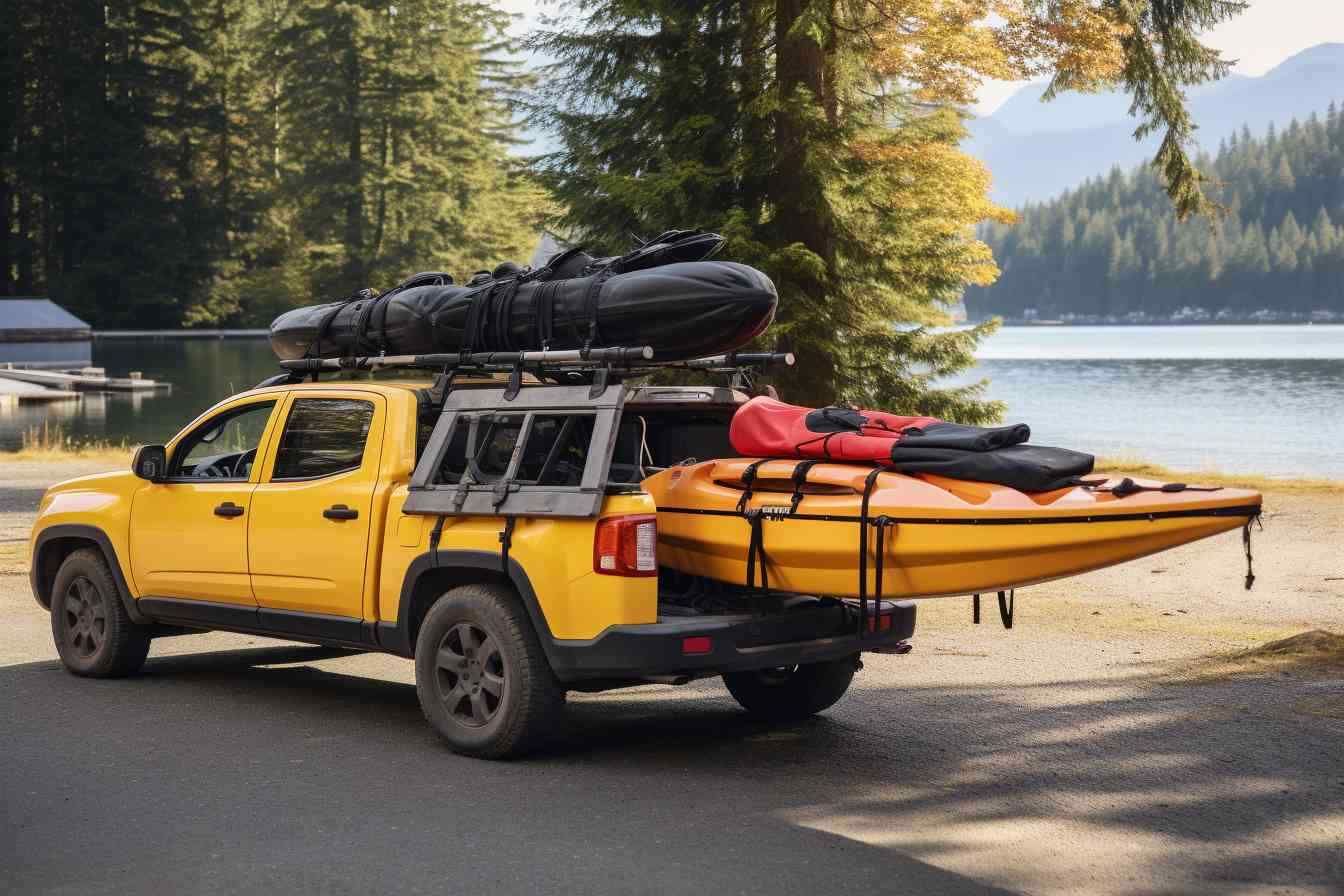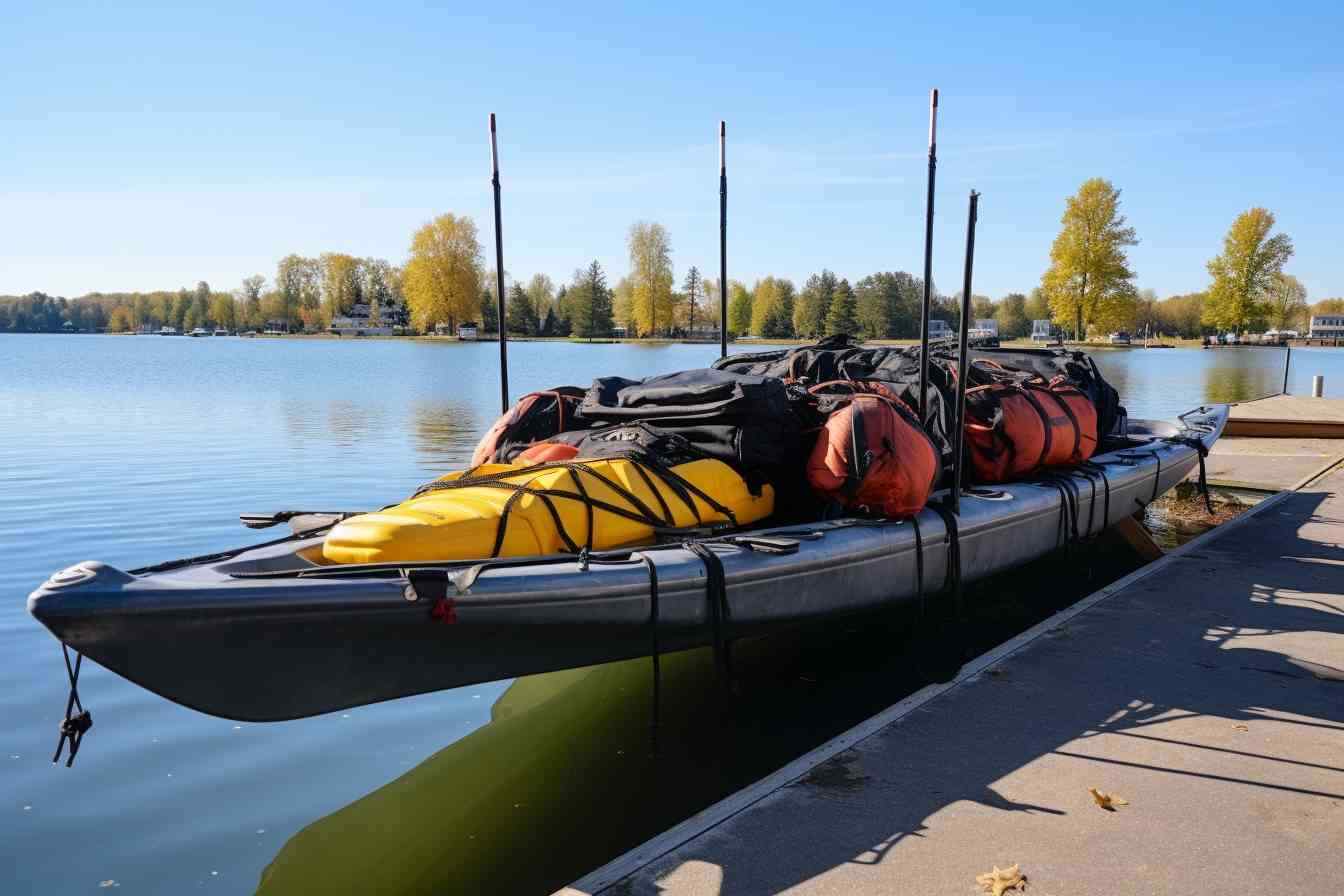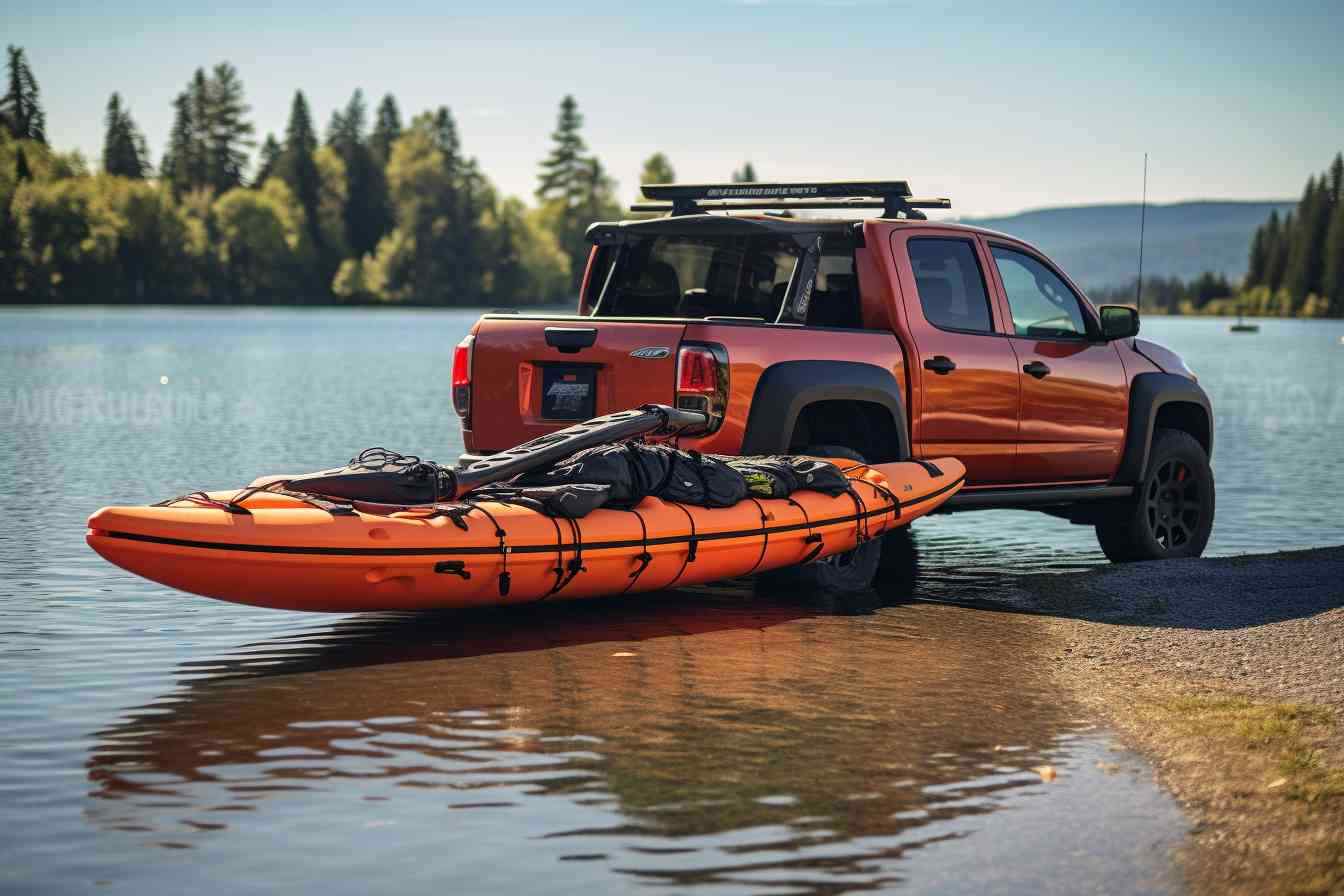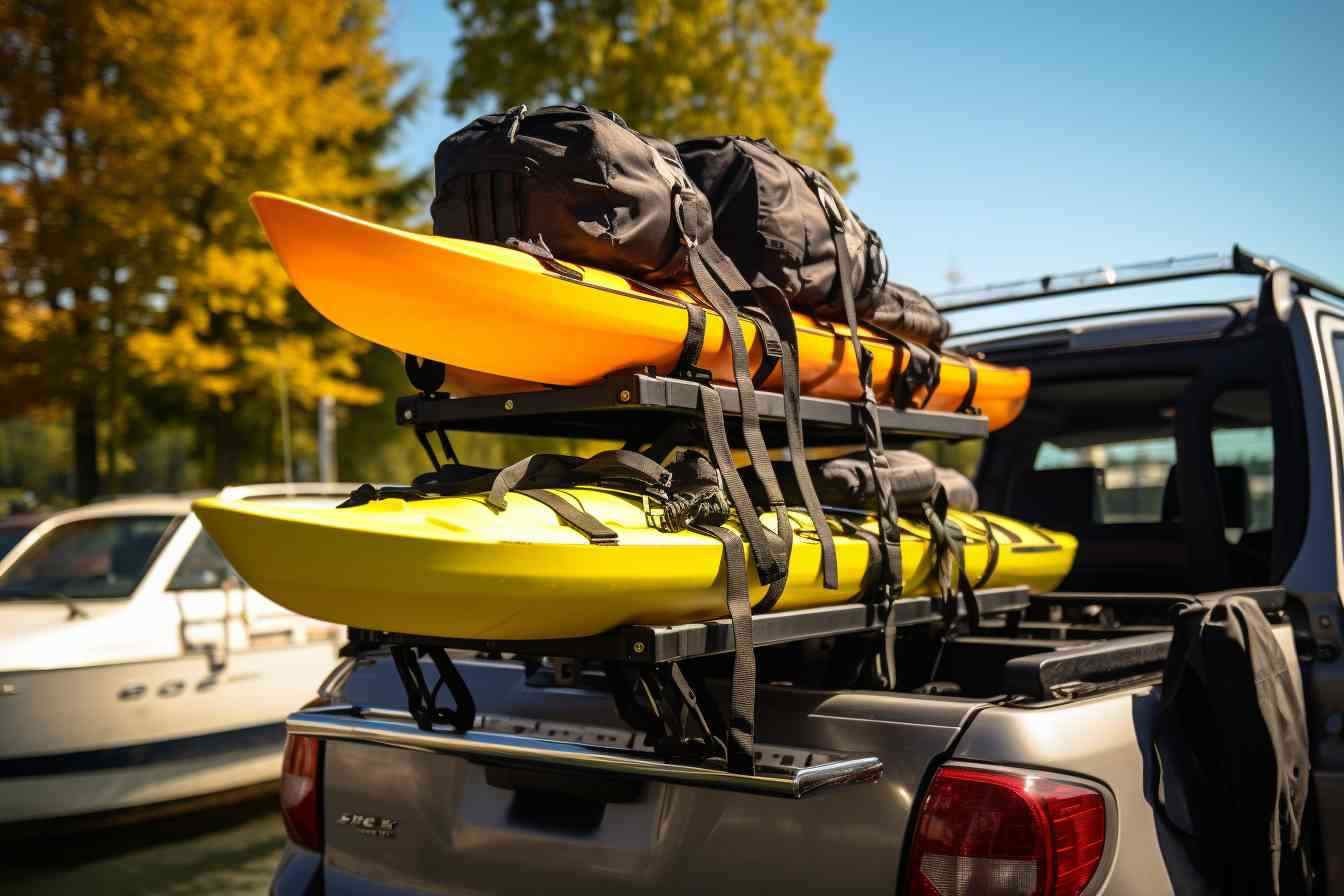Mastering Safe Kayak Transportation Essential Tips for HassleFree Journeys

Summary
- Intro: The Safest Ways To Transport Your Kayak
- What Is The Best Way To Move A Kayak?
- Should Kayaks Be Transported Upside Down Or Right Side Up?
- How Do You Transport A Kayak Without A Roof Rack?
- How Do You Secure A Kayak To A Car?
- Final Verdict
- Frequently Asked Questions
- How can I safely transport my kayak?
- What are the necessary precautions while transporting my kayak on a car roof?
- Can I transport my kayak without a roof rack?
- Is a trailer a good option to transport my kayak?
- What type of trailers are best for transporting kayaks?
- Do I need any special equipment to transport my kayak?
- How should I load a kayak onto a roof rack?
- Can I transport my kayak on a pick-up truck?
- How do I prevent my kayak from getting damaged during transport?
- Can I transport two or more kayaks at once?
- Related Video
- Frequently Asked Questions
Intro: The Safest Ways To Transport Your Kayak

Let’s dive right in, shall we? When it comes to the safety of you and your kayak, there’s no room for compromise. Your kayak is an investment, a buddy, and it holds precious memories of your breathtaking journeys. The last thing you’d want is it to get damaged during transportation.
The first rule of thumb is securing it properly on your vehicle. A high-quality roof rack is simply priceless… and believe me on this, it’s a lifesaver. Those snugly fitting ones are my favs. You see, they tightly wrap around your kayak, reducing the chances of it slipping off.
Now, if your kayak is too bulky, going for a trailer specifically designed for kayaks could be a smart move. It’s easier and safer, I must say, and there’s an added bonus too: You won’t need to lift it onto the roof of your car!
Padding..oh, boy! Don’t overlook its importance. Padding reduces pressure at the contact points of your kayak, preventing any potential damage. Soft, foam paddings are simply great. They’re lightweight, durable, and do the job right on.
And it’s not over yet. Using cam buckle straps for fastening your kayak is an absolute must. I tell you, these things create adequate tension without damaging your kayak.
Lastly, tie-downs attached to the front and rear of your car are a must. They provide added stability to the kayak during transit, making sure your kayak doesn’t twist or sway.
Vigilance is key, let’s keep that in mind. Always double-check your kayak is securely fastened after every pit stop and adjust the straps if necessary. Safety, after all, should be your top priority!
Remember, your kayak isn’t just a piece of equipment. It’s part of your adventure spirit, so let’s give it the care it deserves.
What Is The Best Way To Move A Kayak?

Let’s dive into it, shall we? So, you’ve got a kayak - fantastic! But now comes the question of how to transport it without damaging it or, heaven forbid, losing it on the highway. That could really put a damper on your day… trust me, I know. The safest way to transport your kayak is to use a reliable kayak roof rack or trailer, depending on the size and weight of your kayak.
A good quality roof rack is my personal favorite—so simple and handy. Just hoist your kayak up there, secure it down tight, and you’re ready to hit the road. But, mind ya, doing this alone can be a bit challenging. So, if you’ve got a buddy who can lend a helping hand, that would be swell. Double-check to make sure it’s secure—trust me, you don’t want a “kayak meets highway” situation.
Now, if you’ve got a bigger, heavier kayak or multiple ones, a trailer might be a better bet…or should I say, betta fish (kayak humor, enjoy it). A good, sturdy trailer will keep your kayaks safe and sound, and unlike roof racks, it’s easier to load and unload. Just remember to always check your local laws regarding trailer usage on highways. It’s always good to be informed, right?
In both cases, using appropriate straps and tie-downs is a must. Don’t skimp on these—kayaks aren’t cheap, after all. Follow manufacturer guidelines for how to strap it down. Here’s a pro-tip though, never use bungee cords. They don’t provide the secure hold you need and could result in a wayward kayak.
To conclude, proper transport is as important as choosing the right kayak. Treat it like the precious cargo it is and ensure you’re prepared to transport it safely. So, have fun hitting those rapids, and remember—safety first!
The Safest Ways To Transport Your Kayak To Your Car
Well, as someone who’s passionate about kayaking, I’ve had my fair share of challenges trying to figure out the safest way to transport my kayak to my car. But after years of trial and error, I’ve finally nailed it down. Here are some of my findings:
-
Use The Right Equipment: One of the first steps is to ensure you have the proper gear. A good kayak rack for your car can do wonders. It not only helps support the weight of the kayak, but it also secures it in place during the ride. And let me assure you, it’s a much safer alternative than strapping it directly onto your car’s roof!
-
Positioning is Key: When you’re putting your kayak onto your car, you should always place it hull down. This allows the cockpit and deck to be protected from any potential damage.
-
Be Mindful of the Straps: Strapping your kayak down correctly is extremely crucial. Secure the straps too loosely and your kayak could wobble or slide off. Do it too tightly, and you could end up damaging the kayak. The trick is to find a happy medium where the kayak is secure, but the straps aren’t cutting into it.
-
Consider A Lift Assist: Lifting a kayak onto a car can be a bit challenging, especially if you’re doing it solo. A lift assist system can help you hoist your kayak onto your car with minimal effort, reducing the risk of injury and potential drops.
-
Double-Check Your Work: After you’ve got your kayak strapped up, it’s always a good idea to double-check everything. Make sure all the straps are secure and the kayak is stable. Remember, it’s better to be safe than sorry!
-
Get Help When Needed: If your kayak is particularly heavy, or your car is quite high, don’t be shy to ask for help. Lifting and securing a kayak is much safer (not to mention easier) with an extra set of hands.
-
Take Ample Time: Rushing the process of securing your kayak to your car is a recipe for disaster. It’s always better to take your time, be thorough with each step and make sure everything is done correctly.
Remember, safely transporting your kayak isn’t just about protecting your car and kayak from damage. It’s also about keeping you and others on the road safe. So take the time to do it right, and happy kayaking!
Should Kayaks Be Transported Upside Down Or Right Side Up?

Well, you’re asking a question most kayak enthusiasts have pondered at some point: should kayaks be transported upside down or right side up? I’m gonna tackle that and give ya the safest methods to transport your beloved kayak.
First, let’s think about it logically. While transportation protocol can differ a bit depending of the model of your kayaks, a general rule of thumb is that it’s safest to transport a kayak upside down. Yikes, did I surprise you there? Here’s the thing, by flipping it upside down, you’re shielding the cockpit and deck from potential damage. You’d cringe at the sight of your precious kayak’s hull getting scuffed up, right? So, having the more resilient hull exposed to potential harm is simply much safer.
Yet, there are caveats to this method. You must ensure the kayak is securely strapped down to avoid wobbling in transit which can cause harm. Also, special attention must be paid to the type of roof rack used. Sometimes, kayak cradles or saddles designed for certain roof racks necessitate transporting the kayak right side up. If that’s so, no problem, just ensure the kayak isn’t sitting too tautly on the rack, causing pressure points.
So, the moral of this story? Primarily, the kayak should be carried upside down, unless you have specific roof racks that dictate otherwise. Regardless, secure fastening and double-checking your setup before heading off is crucial to ensuring no damage occurs during transportation.
Remember, the safest transportation method doesn’t only protect your kayak’s physical integrity, but also other drivers on the road and yourself. And isn’t that the most important thing of all? Safety first, always, fellow paddlers!
How Do You Transport A Kayak Without A Roof Rack?

Well, who said you need a roof rack to transport a kayak? Not me, that’s for sure! Firstly, let’s talk about magic of foam pads. These fluffy marvels of science really can do a number on transporting your kayak… Wait, did I just say fluffy marvels of science? I meant foam blocks! It’s almost the same thing…right? Well, anyway, you just attach those blocks on your car roof and voila – the perfect carrier for your kayak. Just make sure to secure the kayak with straps.
And then, there’s the utility trailer. Listen, fellas, if you’ve got one of these, consider yourself in luck! They’re great for transporting everything from furniture to, you guessed it, kayaks! You just need to properly secure your kayak onto it, and you’re already halfway down to the river-oops, I meant road. Trailers might seem bulky, but trust me, they are a lifesaver.
But what’s this now? It’s a pool noodle…it couldn’t be! But yes, it’s the humble pool noodle, the unsung hero of the kayak transportation world. Big whoop, right? Nope – it’s actually fantastic. You can transform the common pool noodle into a makeshift roof rack. It’s a bit more work, but it’ll save your bucks big time.
So there you have it – three simple but smart ways to transport a kayak without a roof rack. It’s all up to you, your preference, and what you have on hand. Keep that kayak safe during transit, and it will repay you with the adventure of a lifetime!
How To Transport A Kayak Without A Roof Rack
Well, let’s delve into the nitty-gritty of transporting a kayak without a roof rack. It’s definitely possible and there are a number of ways to ensure a safe and effective way to accomplish this.
• Padding and Straps: You can use extra padding like foam blocks or pool noodles to create a protective barrier between your vehicle and the kayak. Tie-down straps are essential for securing your kayak onto your car, making sure it doesn’t move about during transport. Remember, safety is paramount here.
• Tow Hitch Extender: This is a contraption that slides into your tow hitch and provides an additional point of contact for your kayak. The design prevents the kayak from tilting or swaying while you’re driving down the road.
• Trailer: If you’ve got multiple kayaks or don’t want the kayak on your car roof, a trailer is an excellent idea. Trailers allow for straightforward loading and unloading. However, take note - maneuvering and parking with a trailer could be a bit challenging.
• Inflatable Kayaks: These are quite the game-changer and a practical option for those who do not have roof racks. Once deflated, it can fit into a duffle bag, making it easy to transport in nearly any vehicle.
• Inside the Vehicle: For smaller vehicles, particularly cars with a spacious back seat or a hatchback, transporting the kayak inside might be the simplest solution. Be prepared though - it can be a tight fit and you may need to move your seats around for the kayak to fit.
• Soft Rack Systems: These aren’t permanent fixtures to your vehicle like roof racks but still give you the convenience of one. They’re inflatable and can be installed on to your car when needed and stored away compactly when not in use.
In the end, remember that the aim is to get your kayak from point A to point B in the safest way possible. Keeping the kayak secure throughout the journey will ensure its longevity and your safety. Happy kayaking!
How Do You Secure A Kayak To A Car?
Well, I’m glad you asked that! Securing your kayak to your car is a really important task that should not be taken lightly. There are a few different methods you can use to properly and safely secure your kayak.
A popular option is to use a roof rack. This is an accessory that you attach to the top of your car that allows you to physically secure your kayak to your vehicle. You’ll just need some sturdy straps to snugly fasten the kayak to the rack – make sure it’s nice and tight so it doesn’t wiggle around while you’re driving.
I gotta admit, it’s quite a sight seeing a kayak on top of a car, kind of like a cherry on top of a sundae.
Another option is to use a foam block carrier. They are quite affordable and don’t require the use of any tools for installation. The foam blocks fit snugly onto the roof of your car, and the kayak sits on top of them. Similarly, attach your kayak with tie-down straps, and don’t forget to double-check that they are secure.
If you’ve got the funds, you could consider a specialized kayak trailer. These are designed specifically for transporting kayaks and can be hitched to the back of your vehicle. They can make loading and unloading a cinch! Importantly, always make sure to double- and triple-check your straps and buckles to ensure everything is secure before hitting the road.
So there you have it. Some pretty uncomplicated ways to transport your kayak. Next time we’ll go over the proper way to load your kayak onto your vehicle. Can’t wait!
The Safest Ways To Transport Your Kayak In A Car
Well, moving your kayak from one location to another can sometimes be challenging. But, hey, no need to fret because I’ve got you covered. Here’s everything you need to know about how to safely transport your kayak with your car.
-
First up is to invest in a good quality car rack. It’s high time you realize that not all racks are created equal. Some will safely cradle your kayak while others, well, might give you a heartburn or two. The key here is finding a rack that fit snugly to your car’s roof and can handle the weight and size of your kayak.
-
Strap your kayak securely onto the rack. This is like, super important, you know. Your kayak should sit flat and center on the rack. Start securing the kayak from the middle, using straps and ratchet tie-downs. Crisscross the straps to add an extra layer of security.
-
Mind the bow and stern. These are the front and rear of the kayak. They need a little extra attention. Place some anchor straps in both these areas to prevent unwanted sliding. It’ll give your vessel a firmer grip and keep it steady while driving.
-
Check the laws in your area. Get this; different states have different rules for transporting oversized items. Before you start driving off to the sunset with your kayak, it’s a good idea to familiarize yourself with local regulations.
-
Regularly check your setup during the journey. Hats off to you if you’ve secured everything perfectly. But, always remember, changing road conditions can affect your setup. So, it’s best to stop occasionally and make sure everything is in order.
Lastly, don’t forget to drive carefully. Remember, you’ve got precious cargo on your roof. So take it easy on turns and bumps. Steer clear of low hanging trees and always pay attention to overhead clearance when entering garages or low bridges.
There you have it; transporting your kayak is no longer a mystery, right? So what’s the holdup? Grab your gear, load up that kayak, and get ready for your next adventure!
Final Verdict
Listen up, everybody! After days of research and digging into trillions of transporting options, it looks like I’ve finally found my answer. I’d like to share my thoughts on the safest ways to transport your kayak. Now, I’ve been around the block and I’ve seen a thing or two in my time kayaking. And it ain’t always a picnic, I can tell ya.
Okay, let’s get down to brass tacks! Now, securing the kayak on a roof rack is the conventional way - tried and true. Gets the job done if you ask me! But you gotta use padded carriers, alright? They prevent scrapes and bruises on your cherished kayak. Ensure to use two straps in the front and back, crisscrossing them for ultimate security and safety in transit.
Now, for you folks without a roof rack, I reckon a foam block carrier would work just fine. It’s a bit of a workaround but hey, when in Rome! They’re sturdy and provide a comfortable cushion for the kayak. But remember, don’t skimp on strapping it down tightly.
Then there’s the option of a trailer. Yeah, it may look like you’re going overboard and it’s a bit pricier, but safety first, right? It’s easier on the back, and you’d be avoiding the risk of the kayak sliding off. Not a bad option in my book.
So, that’s about it, ya’ll. Keep these points in mind, take your pick and take to the water worry-free. Of course, be sure to review local regulations before hitting the road. No one wants a run-in with the law. And lastly, always secure your kayak properly, nothing worse than a runaway kayak! Fingers crossed, you got this!
Frequently Asked Questions
How can I safely transport my kayak?
Well, transporting your kayak safely may involve using roof racks, trailers, foam blocks, or kayak carts. These techniques help prevent damage to both your kayak and vehicle, and ensure a smooth trip for you and your vessel.
What are the necessary precautions while transporting my kayak on a car roof?
Absolutely. Make sure the kayak is properly strapped down, preferably with kayak-specific tie downs. The bow and stern need to be tied down to your vehicle to prevent shifting. Don’t forget to double-check everything before hitting the road!
Can I transport my kayak without a roof rack?
Sure thing, buddy! If you don’t have a roof rack, foam blocks could be an alternative. They strap around the kayak and over the roof of your car, providing a cushioned ride. Not as secure as a rack, but certainly can work in a pinch!
Is a trailer a good option to transport my kayak?
You bet! A trailer can be an excellent choice, especially for larger boats or multiple kayaks. It keeps the kayaks at a low level, making loading and unloading a breeze. Bonus - it can help you bypass some of the risks associated with roof transport!
What type of trailers are best for transporting kayaks?
Well, there are many different types of kayak trailers available, but the best ones are generally lightweight, durable, and have protective padding. Adjustable ones allow you to transport different types of kayaks, which can be quite handy!
Do I need any special equipment to transport my kayak?
Indeed, you do. You’ll need car racks, tie-down straps, or foam blocks to secure the kayak to your vehicle. If you’re using a trailer, you’ll need hitch gear. And don’t forget a kayak cart for the heavy lifting from your vehicle to the water’s edge.
How should I load a kayak onto a roof rack?
Oh man, this part can be a bit of a workout. Lift your kayak onto the roof rack from the rear end of your vehicle. It’s generally easiest to load the kayak upside down, with the hull facing up. But do check your rack’s manual for specific instructions!
Can I transport my kayak on a pick-up truck?
Absolutely! Pick-up trucks can be a great option as you can just slide the kayak into the truck bed. However, make sure the kayak is secure and that any part of the kayak that extends past the truck is clearly marked.
How do I prevent my kayak from getting damaged during transport?
Great question! Wrapping your kayak in a protective cover can help prevent any scratches or dings. Also, always ensure the kayak is securely fastened and isn’t rubbing against anything sharp or abrasive.
Can I transport two or more kayaks at once?
Well, that’s a bit tricky, but yes! Using a stacker or J-cradles on your roof rack, or a trailer with multiple racks, you can indeed transport multiple kayaks. However, be sure to not exceed the weight limit of your chosen method. Safety first, right?


Comments